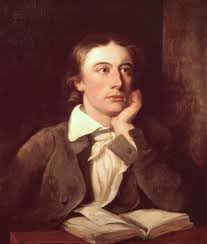Keats delves into the complex emotions of grief, despair, and the consequences of deceit through Lamia’s subsequent transformation back into her serpent form. This symbolic act represents her loss of humanity, her shattered hopes, and her descent into isolation and exile. The poem concludes with Lamia crawling away into the wilderness, forever haunted by her unattainable desires. Beyond the tragic love story at its core, “Lamia” explores profound themes and ideas. Keats crafts a cautionary tale about the dangers of pursuing illusions and deceptive appearances. The poem questions the nature of reality, highlighting the fragile boundaries between truth and falsehood, appearance and essence.
Keats’ poetic language is rich with sensory imagery and vivid descriptions. He employs lush and evocative language to transport the reader into the mythical world of Lamia and Lycius. The poem’s structure and rhythm, characterized by its use of couplets and intricate rhyme schemes, add musicality and elegance to the narrative. “Lamia” exemplifies Keats’ ability to combine elements of mythology, romance, and tragedy into a cohesive and emotionally resonant work.
Also read: Summary and Analysis of The Legend of Good Women by Geoffrey Chaucer

Leave a Reply